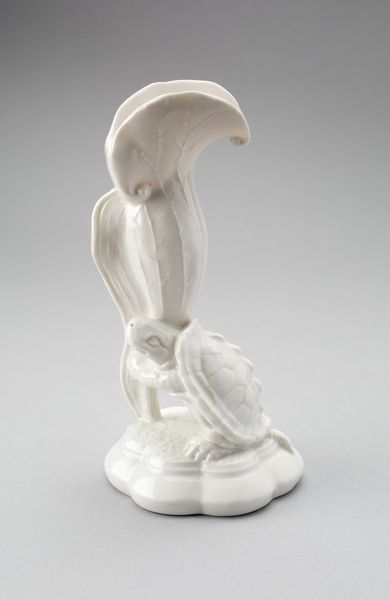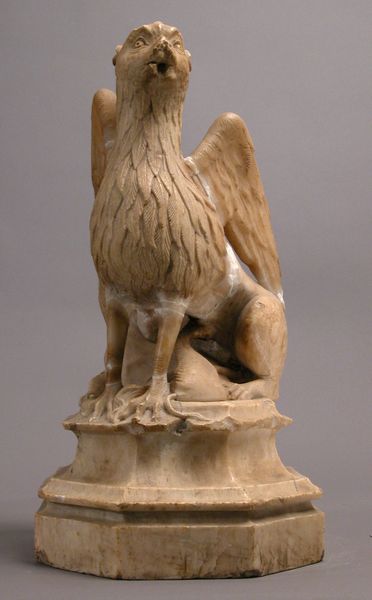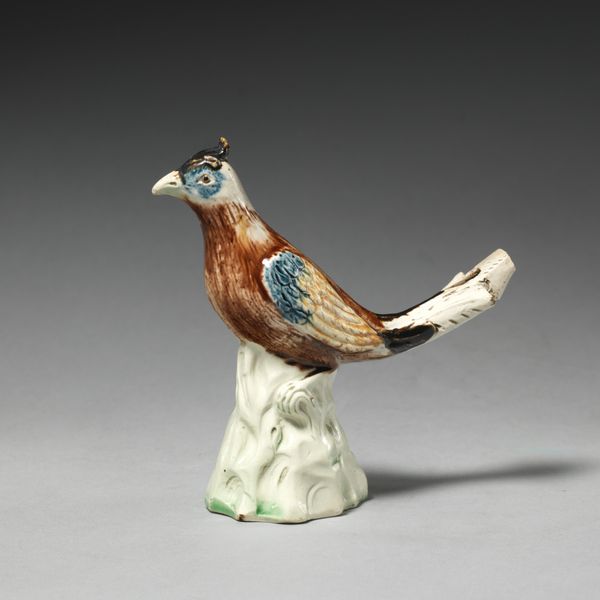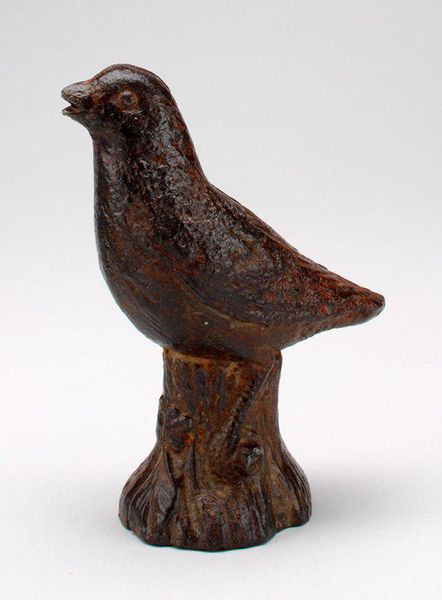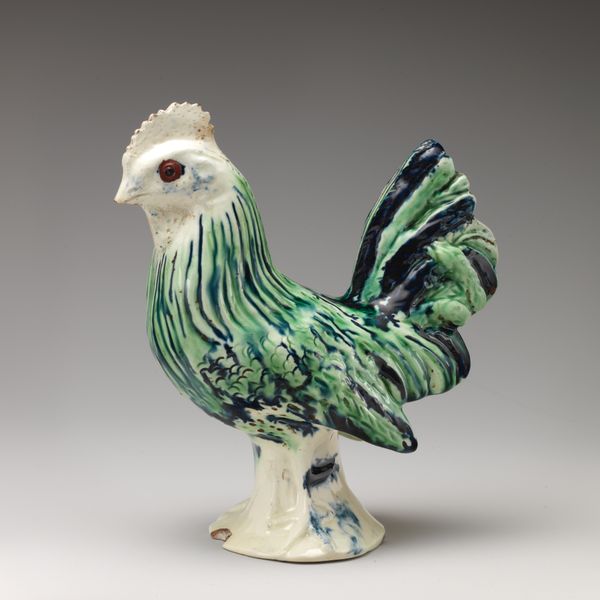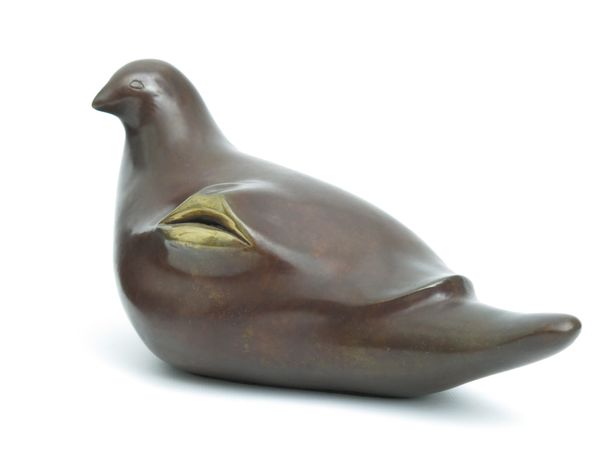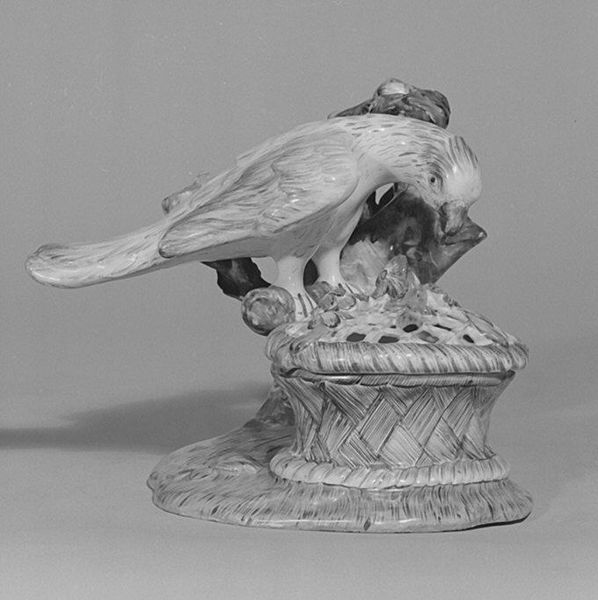
ceramic, porcelain, sculpture
#
sculpture
#
ceramic
#
porcelain
#
sculpture
#
decorative-art
Dimensions: Height: 6 3/4 in. (17.1 cm)
Copyright: Public Domain
Curator: Standing before us is a porcelain sculpture, "Pheasant," crafted by William Littler between 1745 and 1755. It now resides here at the Metropolitan Museum of Art. Editor: The first word that springs to mind is "pristine." The stark white porcelain creates an impression of elegance and almost unsettling stillness. Curator: Its whiteness is definitely striking. Porcelain production during this period was closely linked with ideas of status and consumption, a deliberate showcasing of wealth and access. What stories do you think it holds? Editor: Absolutely. Think about the conditions needed for this: mined clay, specialized labor in Staffordshire perhaps, fired at extremely high temperatures... luxury production for elite tables. This isn't your common fowl; it is an aristocratic fantasy. Curator: The representation of nature as a display of status – that ties into many social dimensions. It makes me think of class structures and societal hierarchies that found expression in these objects, especially with porcelain being so prized. I can't help but think of the exploitation in places like China needed to perfect this "white gold." Editor: Yes, we see these "natural" forms appropriated, stylized, and refined into emblems of power and privilege. One can easily imagine it presiding over a lavish meal, a silent, feathered commentary on the inequality of consumption. Curator: Exactly. And understanding how this decorative sculpture was experienced—whose gaze it catered to—opens up discussions about taste and even the political uses of aesthetics. Editor: It's also easy to imagine this replicated en masse for the consumption of luxury society... even today. The legacy of ceramic's process persists in manufacturing of status, just using today's tech. Curator: Viewing "Pheasant" within that historical context certainly casts a long shadow. We see so much when we explore both its social meaning and material realities. Editor: Indeed, delving into the porcelain's process reveals as much about wealth and power as about form.
Comments
No comments
Be the first to comment and join the conversation on the ultimate creative platform.

